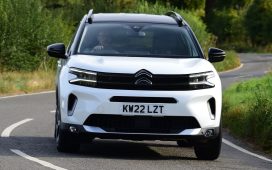According to Gartner, several factors will make 2023 a true test of the resolve of governments and the automotive industry in driving battery-electric vehicles (BEVs) forward.
“2023 is the moment of truth to drive full electrification forward,” says Pedro Pacheco, Vice President Analyst at Gartner.
“The spike in electricity prices in Europe make BEV running costs less attractive, some countries, like Australia, the U.K. and Switzerland, are starting to introduce EV taxation. In addition, China ended electric vehicle subsidies at the beginning of 2023 and global charging infrastructure still has many coverage gaps and the average quality of service is poor.”
In addition, the sharp increase in raw material prices like lithium and nickel will drive BEV costs higher, making it harder for original equipment manufacturers (OEMs) to close the price gap with internal combustion. As a result, BEV sales may grow at a considerably lower pace or stall in some markets, making BEV investments take longer to break even.
Gartner expects supply chain shortages in the automotive industry to continue through 2023.
“More than two years after the pandemic began, carmakers still cannot forecast an end to shortages of semiconductor chips or the subsequent shortage of vehicles they can produce. They also face short supply of key materials for BEV batteries, causing the prices of commodities to surge,” says Mike Ramsey, Vice President Analyst at Gartner.
“The digital transformation of automotive retail has not stalled, simply reduced speed,” adds Pacheco. “As the challenging economic environment is slowly moving the automotive market from supply-constraint to demand-constrained, auto-makers and retailers will refocus on the transition to online retail sales. They will also do so to reduce sales costs.”
The ongoing downturn period provides an opportunity for automotive CIOs to help their companies grow their market share through technology.
For instance, several established auto-makers are trying to transform into technology companies, but their corporate culture has been a significant obstacle to their ambitions. “This must be their starting point to avoid widening the gap with digital native auto-makers and grow their revenue via technology even further,” notes Pacheco.
Looking at the future beyond 2023, Gartner predicts that by 2026, more than 50% of EVs sold globally will be Chinese-branded automobiles.
“There are more than 15 Chinese companies selling EVs and many of these are smaller and much less expensive models than those sold by foreign rivals,” says Ramsey. “While foreign auto-makers like Tesla, VW and GM are selling a lot of EVs in China, the growth is much faster with Chinese companies.”
As demand grows worldwide for EVs, Chinese firms are well-situated to take advantage of the growth with good access to key minerals and battery manufacturing capacity in China. As a result, Gartner recommends that automotive CIOs focused on EVs, integrate supply chain planning and visibility software to ensure better business decisions about where key materials are sourced and ensure resiliency for key materials.
Meanwhile, Gartner analysts estimate that by 2025, tech giants will own a part of the operating system for 95% of new cars on the road.
Tech giants have begun to displace established automotive Tier 1 suppliers as in-vehicle software providers (e.g., Google Automotive Services and CarPlay). Instead, they use their ecosystems to claim a larger share of the vehicle operating system territory (e.g., Renault’s partnership with Google and VW’s partnership with Microsoft).
Furthermore, several tech giants are directly involved in developing, manufacturing and selling cars. Foxconn, Huawei, Alibaba, Xiaomi, Tencent and Sony are all examples of this trend.
“Succeeding alone won’t be possible for a traditional OEM or supplier. Each of them must forge partnerships with at least some digital giants if they want to remain profitable and competitive in the industry,” concludes Pacheco.










